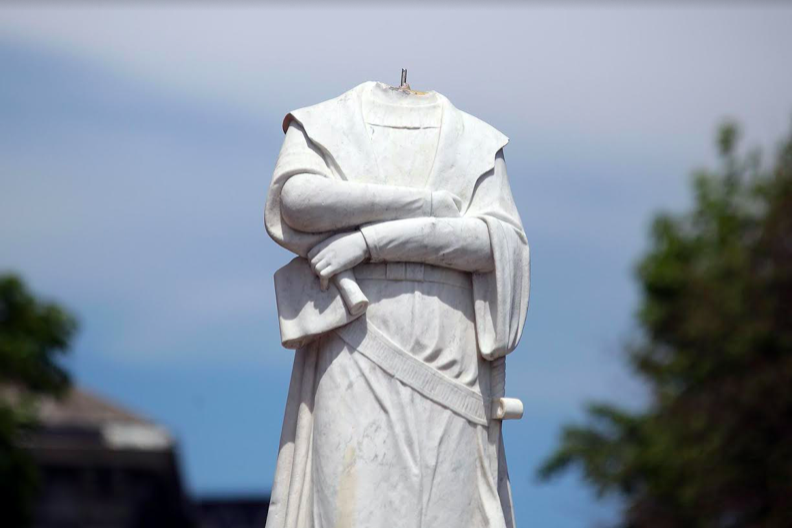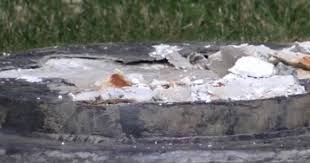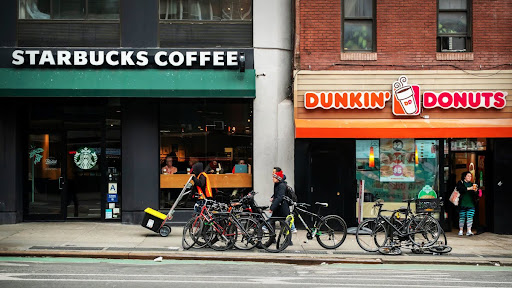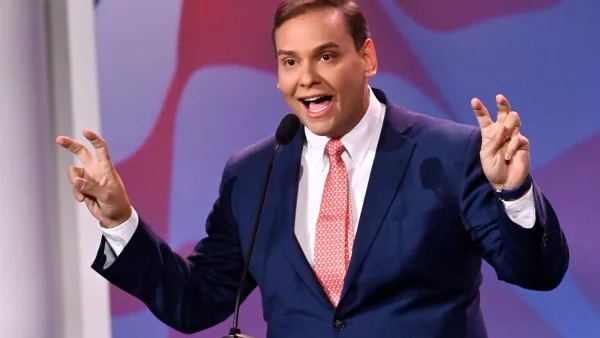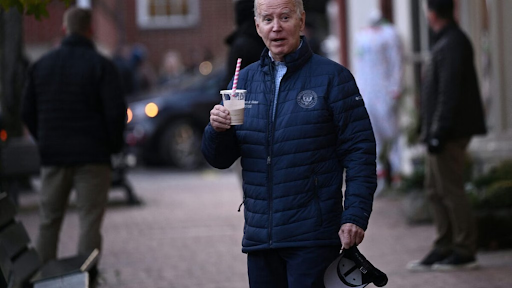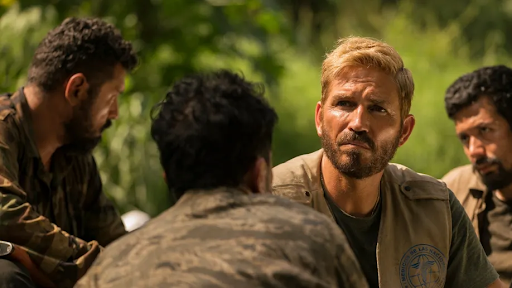The Issue of Statues and the Importance of History
It’s hard to keep up with the number of statues that have been pulled down or desecrated across the US this summer, and an online search reveals that the news media also can’t keep up. This movement to pull down statues follows several years of legal efforts in some regions of the country, commonly in the south, to change the signage of the south’s Confederate legacy. This summer, the daily news features a fresh round of statues being defaced or torn down across the nation, and the pattern revealed by the statues targeted leaves a confusing message about motives.
Southern confederate figures may have ideological rhetoric that connects to concerns about racism, but why so many statues damaged that feature individuals who fought against slavery? How do we account for the desecration and/or toppling of the Quaker abolitionist Matthias Baldwin statue (Philadelphia, PA), the 54th all-black Civil War regiment leader Robert Shaw (Boston, MA), and the formerly enslaved, self-liberated and anti-slavery spokesman Frederick Douglass’ (Rochester, NY), whose statue was toppled on the very anniversary of his powerful “What to the Slave is the Fourth of July” speech? This pattern of destruction extends beyond the issue of racism, and reveals dangerous problems when a culture does not learn its own history with the complexity of careful historical scholarship — and instead relies on simplistic ideology as a weapon to destroy.
Recently President Trump issued an executive order to promise criminal prosecution to those who destroy government property in the form of monuments and statues, and in his speech at Mt Rushmore over the Fourth of July weekend, the President reiterated the value of preserving history. Yet, a close reading of the President’s speech reveals a simplistic celebration of the past, without encouraging a dialogue with historical challenges.
What both the Black Lives Matter protest-inspired statue destruction efforts and the President’s speech-making efforts lack is an understanding of the role of history in a democratic culture. History cannot be viewed with a fixed mindset that we should destroy or celebrate; it requires a growth mindset to investigate and assess how we think through our past in light of historical discoveries. Protestors attacking statues stand by their acts as toppling America’s racist past in broad sweeping gestures that miss the nuance of America’s history. At the same time, President Trump emphasizes celebrating the heroes of America’s past rather than wiping out our history. While his speech mentioned the problems of racism and celebrated African American leaders, he did not emphasize that there are problems in America’s history that need ongoing dialogue and complex assessment rather than simple celebration.
Why we study US History & Civics
America has long practiced local control of school curriculum, and this honors the freedom of states and local school boards to direct their citizens at a closer range than a national curriculum could provide, yet US history and civics remains a required course in most states. Why do we need to study civics and US history? Why is this central to school curriculums?
The American republic is complex: we have a mixed regime, with multi-layers of government (local, city, town, county, state, national) and with complex structures (executive, legislative, judicial branches, bicameral legislatures, varying lengths of elected terms, various ways new legislation can be advocated). Our Constitution and Bill of Rights are a foundation of written laws, which the entire legislative and Supreme Court case history adds to. These laws need to be read, studied, understood; and they are complex. Understanding our Founding documents and the governmental structures and systems that form our republic requires advanced reading comprehension skills, the ability to grasp sophisticated logical and rhetorical arguments, and an understanding of the continuities and changes that have developed since America’s Founding. Given that so many of these provisions were the product of compromise, one must understand all sides of each argument to grasp the underlying principles and tensions that have been a part of our history, and which continue today.
Studying history requires the intellectual virtues of curiosity to investigate beyond surface moments, carefulness to base claims on historical facts, openness to new historical discoveries and insights, and fairmindedness to see varied perspectives.
How Statues are Created
How do statues get built? There is a complex answer to this question, and there are historical factors that require investigation into the building of each statue. Some statues are built with federal funding, others with state or local funding, and many through private organizations who raise funds to build a statue. Italian Americans in Boston raised funds to erect a statue to Christopher Columbus in the North End, which was beheaded by protestors last month. Columbus is a simple target, for the devastating impact of European conquest on Native tribes in the Americas developed over a long period of time and with countless direct and indirect causes, including transmission of diseases. Perhaps Boston’s Italian American community was simplistic in celebrating Columbus simply because he had ancestry in Genoa, when he came to the Carribean under the banner of Spain.
When the US military withdrew from the south following the Civil War and Reconstruction era, after the election of President Rutherford B Hayes in 1877, statues sprung up throughout the south. There was a movement to romanticize the pre-Civil War south (video discusses this at about minute 25) and to recraft a history of defeat in the Civil War with a history of honor. There have been movements in recent years throughout southern legislatures to reassess the statues that honor Confederate leaders, and others have expressed outrage that taxpayer money is used to support this southern agenda to recraft its history. Some advocate pulling down statues that glorify the slave history of the south while others advocate adding better historical signage and adding more statues to balance the assessment of history. This news clip about Richmond VA offers a fairminded assessment.
But what is the process to reassess the value of an historical statue? One has to approach the historical record fairmindedly and apply careful scholarship to frame historical monuments in ways that help citizens learn and critically evaluate the truth about the country’s history and not just simply label a monument in a one-sided way or tear it down to make a simplistic message.
And, tearing down Frederick Douglass’ statue in Rochester NY, along with other advocates of abolition, leaves me profoundly perplexed. Anti-racism could not be a motivation to knock down Frederick Douglass; it was simply destruction. The issue of how we engage our history in a democratic society remains central.
The Value of History for a Democracy
The nature of democracy is complex, and the freedoms that allow for speaking out, protesting peacefully, petitioning the government, electing leaders, and advocating for legislation means that America offers a free market for ideas. A government by law also offers channels to advocate for change, and this process requires knowledge of how our republic works, effective communication skills, patience and persistence. A democracy requires rule by the majority along with protection of minority rights, interests, and voices. These decisions are expressed through laws. No individual or group can take it upon themselves to force change, for this is lawless and tyrannical.
The study of history (historiography) reveals that new research gradually shifts historical interpretation and that historians have their own biases. Imagine if we destroyed every book that did not reflect the newest historical interpretation? How do we expand the argument, practice fairmindedness, and uncover the truth if we limit ourselves to one perspective? Likewise, it would be a violation of the public trust for those entrusted to teach our history if they simply advocated for their opinions without sharing all the perspectives they can with their students. At Montrose School, we remain committed to teaching the fullness of America’s history, its essential documents, along with diverse historiographic perspectives to ensure that our students can read critically, assess fairmindedly, and communicate effectively. This knowledge and these skill sets remain essential to forming citizens, but equally important are the habits of mind, heart, and character essential to preserving our democracy: humility to learn from others, openness to all perspectives, fairmindedness to assess others’ motives, carefulness to base claims on evidence, and charity — to lift up the good of others — throughout this nation’s history, its present, and its future.
Ultimately, our freedom as independent thinkers requires us to sort diverse sources of knowledge in order to discover truth, and truth is never simple because it involves assessing the motives of individuals, each of whom has a complex psychological makeup, family experiences, cultural encounters, and who live in specific historical contexts. You must know a lot, and you must find primary sources to verify, before passing judgment. In the same way, you can’t idolize any historical figure, just like you can’t idolize a teacher’s views, a leader’s views, an organization’s views, a political party’s views — and decide which team you’re on. That kind of taking sides approach simplifies issues into the “good” vs “bad” guys, and people turn to siloed groups or news programs with whom they agree to affirm their team identity. It’s much simpler to agree with a side than to think for yourself, but democracy requires more of each of us.
This problem is magnified on many college campuses where political correctness toward a particular set of views or language patterns is required; and if someone feels offended, colleges have procedures to report other students or professors whose views or language trigger their discomfort. This video provides a fairminded assessment of what is happening on many college campuses. Psychologist Jonathan Haidt’s research suggests that the desire to keep children safe has led to heightened fragility rather than resilience in young adult populations.
But living in a democracy requires a fearless commitment to speak up with courage and to use democratic processes to improve our country. We can’t fear others, others’ ideas, or our history. Fear leads to close mindedness and destruction. Courage leads to humility, openness, a search for truth, and patient advocacy.
In looking at America’s past, let’s make an analogy to family histories. My father had a cousin who was in the mafia. My mother’s great grandfather made money illegally by being a bootlegger. Another grandfather hopped a ship from Italy to the US just before being ordained a priest. I have relatives who practiced adultery, struggled with addiction, held racist or anti-semitic attitudes, and many were sexists. I don’t agree with some of their child-rearing practices or their views on education, politics, or religion. Does that mean that those with whom I disagreed should all be ripped out of my family photo albums, never spoken of? No, these are the stories that form my family and that trace its evolution over time. I wonder how my great grandchildren will view me some day, for I may have said something or done something that offended someone. I say: Tell the truth about me. Tell what I did that was good and share my flaws. Learn from them.
We should do the same with our country. We don’t need to fear a past that reveals our flaws; we need to learn from our failures to strive to improve. We need to do that as individuals, as families, and as a nation. When it comes to whose faces adorn statues in public spaces and buildings, we need to expand our photo albums and add more stories to our nation’s history to grow as an American family, and the old images can stand alongside the new — with fair-minded signs that teach our history with complexity and thoroughness — to tell a more complete family history. We need to engage the past with courage and fair-mindedness in order to see the complexities that attend to each historical moment, and we can’t idolize or destroy our history to make it more simple or to advance a simplistic ideology. We don’t have to fear the truth, for we’re told that the truth shall set us free.
Mrs Whitlock
Humanities Coordinator, Montrose School
bwhitlock@montroseschool.org

